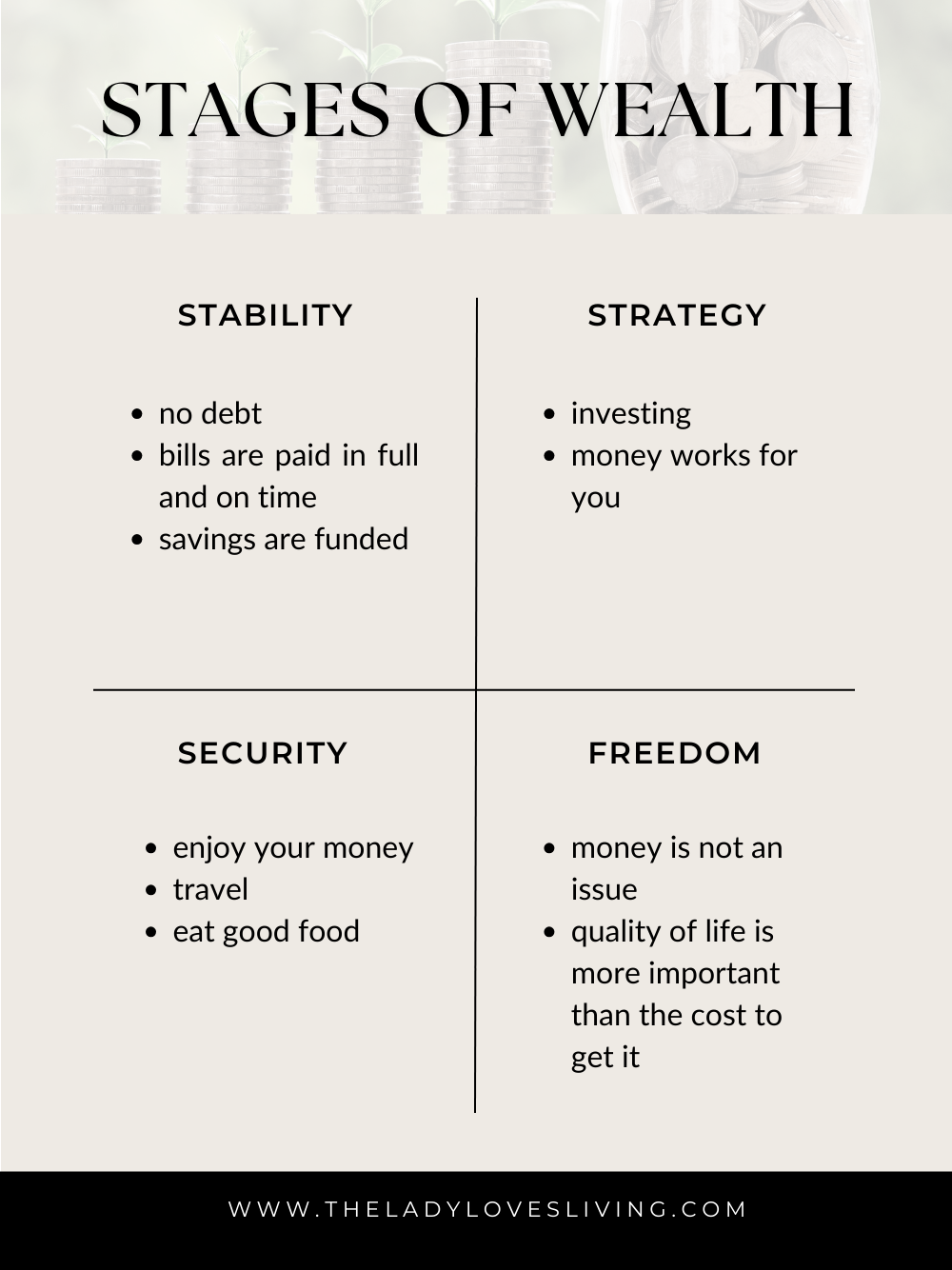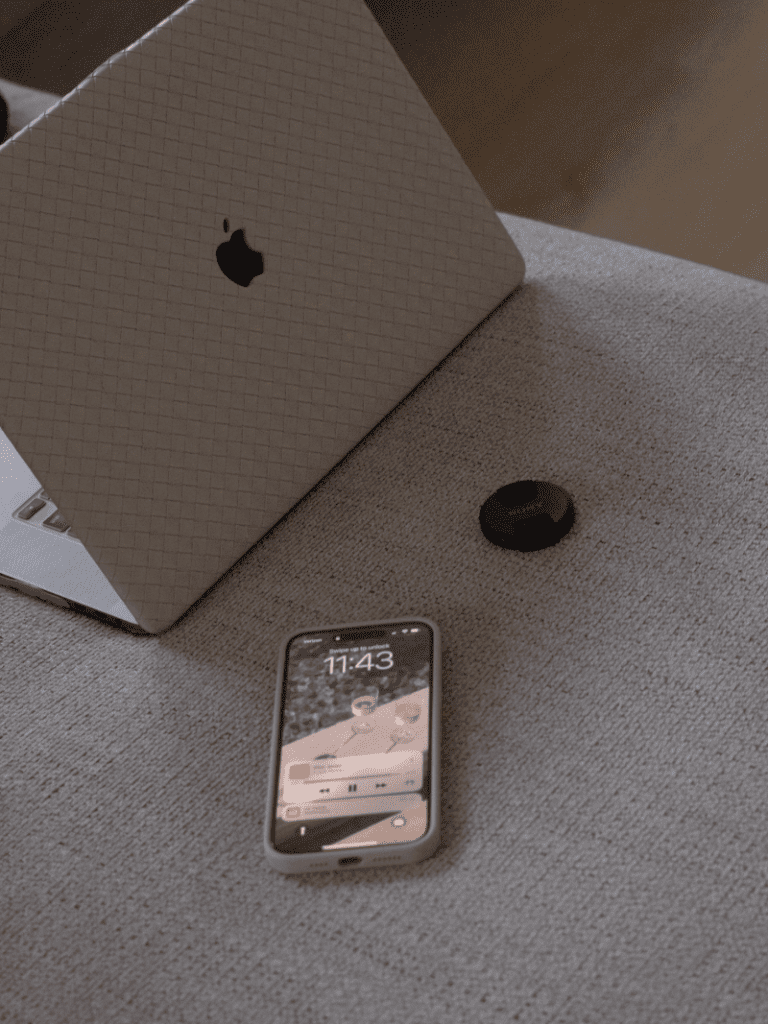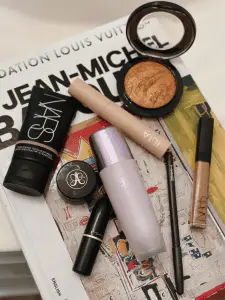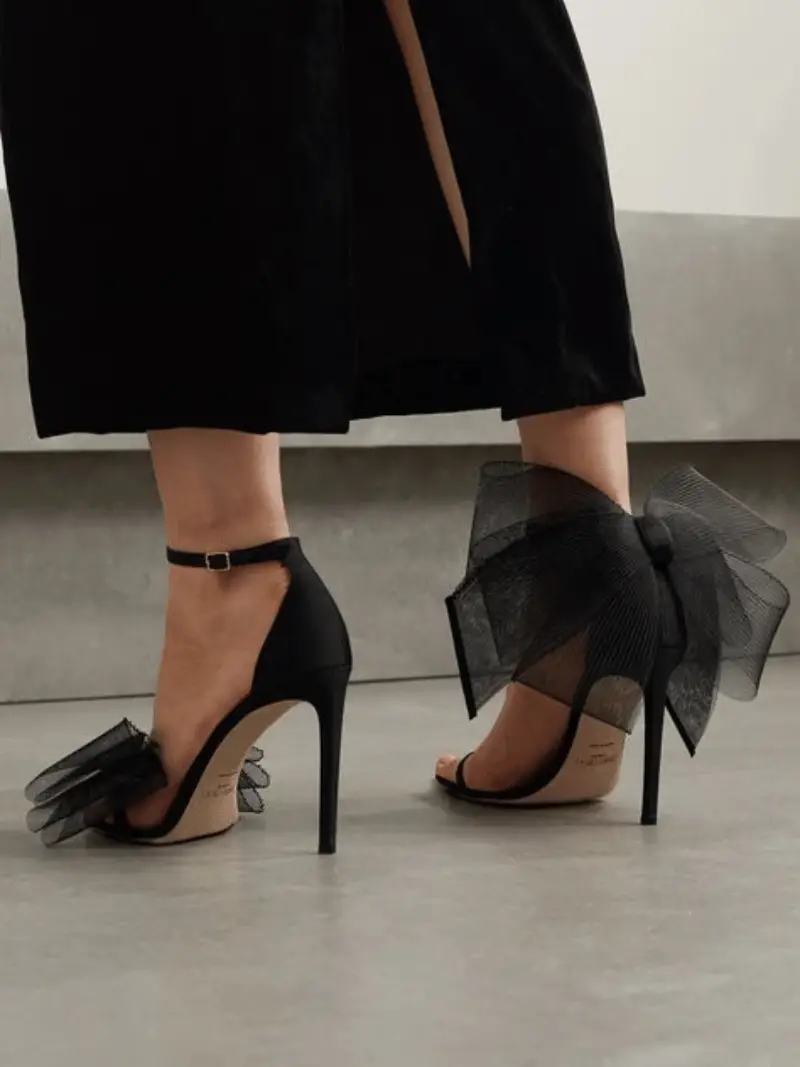I don’t think there is a single person who would honestly say that they don’t want to be rich if they don’t already consider themselves to be well-to-do. Rich doesn’t mean fancy cars and luxury vacations. To me rich is is not having to worry about money, knowing that an unexpected expense isn’t going to be catastrophic, and having options for dealing with the ups and downs of life.
Getting to that point when you are starting from a place of financial illiteracy isn’t an easy feat. Financial prosperity doesn’t come from one perfectly calculated decision. It’s the result of numerous small decisions aimed at your larger goals. Those small choices need to be informed and strategic. Hitting the lottery isn’t a solid strategy to become financially prosperous. The odds just aren’t in your favor.
As someone who knows what it is like to sit in a house with no lights and no running water more than once I know what it’s like to have more month than money, to have to choose between buying enough food for dinner or getting more toothpaste, and I also know that it is like to just want to buy something nice to make life feel less terrible.
I wanted to make sure I mentioned that so you know that the steps to becoming wealthy I’m about to share aren’t coming from a position of being born with a silver spoon in my mouth. I’m not even at financial freedom yet, I’ve just happened to listen to enough people who have achieved it to know have a roadmap for getting there myself.
As the year is winding down, I know it’s prime time for people to start thinking about what they want to accomplish in the next year. Why not have a goal to take more control of your finances? Based on everything I’ve picked up over the years from books, podcasts, financial publications, and personal conversations, these are the levels of wealth and what reaching each level gets you.

Stages of Wealth
Before hopping into the levels of wealth, it might be easier to conceptualize each level and where you are on your path to financial freedom by thinking about the journey in stages first. Each level of wealth is a practical step you should take to move closer to the next stage of wealth.
Stability
Financial stability is the first stage of the journey to becoming rich. To have accomplished this stage means you have no bad debt. Bad debt is money that you owe that isn’t tied to an appreciating asset. An appreciating asset is something that earns you more money over time like real estate. Bad debt is things like consumer debt from credit cards or buying a car. Yes, living in Texas means you probably need to own a car to get from place to place but that doesn’t change the fact that cars depreciate.
To complete the stability phase you should also be able to easily pay all of your bills in full and on time and have a fully funded savings account. You need to have 3-6 months of expenses saved up to have a fully funded savings account. A way to make that a little easier is to open a high-yield savings account or HYSA. This type of account keeps your entire balance safe from stock market volatility, but often earns you far more interest than the savings account at your bank offers. The more money you put into it, the more interest you will earn, so you will reach your savings goal faster.
Strategy
Once you’ve reached financial stability, it’s time to start being strategic with how to put your money to work for you. You need to put your money to work to keep it from losing its value. Think of it this way, if your grandparents put $100 in a safe deposit box to keep it safe in 1960 it’s still just a $100 bill today. However, in 1960 that $100 had the same purchasing power as about $1,000 today. This means they could have bought something in 1960 that’s worth a grand today, but instead, they just have $100 because they didn’t put the money to work earning interest. If they had invested that money into the S&P 500 that $100 would now be worth $47,173.47 in 2023. That’s a huge difference.
Security
Now that you’ve been working on your financial strategy for a bit you might look up and see that you have more financial breathing room than you thought. Your living expenses are low, your bills are easily paid, your investments are fully funded or very close to it, and you still have money left over. (Sidenote: Certain investment vehicles have limits on how much you can contribute each year like 401ks and IRAs. If you’ve hit these limits and still have money left over this is how you know you’ve reached this stage.) Now is when you can start to enjoy your money. You can do more fun things like traveling and eating better food. You could even get something expensive and frivolous like a handbag because it wouldn’t derail your ultimate financial goals.
Freedom
Financial freedom is the final stage. At this stage, money isn’t an issue. You have so much invested that you would have to massively increase your monthly spending to stop the momentum you’ve built from your investments, but your money habits are so good that this is nearly impossible. Here your quality of life becomes more important than what it costs to increase the quality. If you want to step away from working for a month to pursue a passion project you can do it without thinking twice. You can show up for friends and family that were previously unavailable to you. The cost of not earning income for a time will not harm your future finances. Though it may take years or even decades for you to reach this phase, it is a worthwhile endeavor to know that you will not be a burden to your friends, family, or community but will be in a position to help those in need.

Add a Little LOVELY to Your Inbox
Subscribe to get exclusive updates, my beauty & style favorites, and curated round-ups of the things that help me make my life lovely.
What Are The Levels of Wealth?
The stages of wealth are good to know as a gauge of the progress you’re making toward financial freedom. The concept is since, but I needed practical steps to take to move to the next stage.
Honestly, the hardest stage to get out of is stage one – stability. It takes a while to build momentum and getting financially stable takes time and discipline. It will mean saying no to a lot of things you want to say yes to, but it will be worth it to be in a position to not worry about money. So to get your momentum going, these are the practical steps to take to become wealthier.
Paycheck to Paycheck
This is the starting point. Here you might have more month than money and no savings at all. Over-drafting your account might be a common practice and you might also have credit card debt or buy now, pay later payments stacking up on you. You have to decide to stop the madness to move away from this level. The good news is that once you decide you’ll instantly move to the next level.
Tracking Income and Expenses
Level two is tracking your income and expenses to create a budget. If you’re living check to check you have to find a way to minimize how much money is going out each month so you can have some left over to save and eventually invest. Tracking how much you’re making and spending will show you where your money is going so you can start to make informed decisions on where to spend less. You will also make a budget based on how you want to spend your money going forward and stick to it. Staying on budget isn’t easy, but having more money than month will feel great.
You don’t have to use fancy software for this either, but it is easier when you let technology do the work for you. The Mister™ and I have been tracking ours in Excel, but I’m testing out something else to see if I can make this easier for us soon. No matter what level or stage of wealth you’re in you’re going to have a budget. It just won’t feel as restrictive as your eventual investments start to grow.
Paying Off Bad Debt
Now that you’ve opened your eyes to the fact that you spend way too much on Amazon and eating out, you can move to level 3. Here is where you take the money that you’ve cut back from the categories where you have been going overboard and use it to start paying off bad debt. The definition of bad debt hasn’t changed from what I said earlier, but here I’ll add that you should start paying off these debts from the highest to the lowest interest rate. This way, you’ll spend less money paying off the balance over time. You could start with the account with the lowest balance to give yourself a quick win, but move to pay them off based on the interest rate as soon as possible.
If all you can do is make the minimum payments that’s just where you are. It will take you a while to start to have some breathing room, but you’ll be making progress. As you pay off balances, don’t spend the money going back to your old ways. Apply the same amount you were using to pay off one bad debt to pay off another one. You’ll pay that balance down even faster. Keep doing this until all of your bad debt is gone.
You could also find ways to earn more money to pay off your debt from a side hustle, getting a raise, getting a different job, or a second job. None of these are easy to do, but there are only so many cuts you can make to your spending before the real problem is not making enough money.
You May Also Like
Building A Savings Account
This is the fourth level of wealth and the final step in stage one. Before you can start investing you’ll need to have money put aside to handle things life is going to throw at you because it absolutely will happen. You don’t want to take money out of your investments to handle something “trivial” like a new set of tires. You can save up for that and let your investment keep compounding. Three to six months of expenses is the ideal amount to have set aside. You’ll know how much your expenses are based on your budget from level 2.
I have one caveat. If you have bad debt and also don’t have any savings at all, you should save $1,000 before tackling the debt payoff. That way you could reasonably handle any fluctuations in the price of necessities like gas and food without derailing your debt payoff strategy. Get $1,000 in a HYSA and then stop contributing to that until you’ve paid off your bad debt. That balance will keep growing without your input while you’re handling your debt.
Take the entire amount you were using to pay off your bad debt and apply it toward stacking up your savings. At this point, you’re already used to living without that money so you should use it to buy yourself some peace of mind. Knowing that you could pay your bills for three to six months should your income dry up is a small amount of peace, right?
Investing Some Money
Now is where we start cooking with gas, figuratively speaking. This is where You finally get to enter stage 2 – strategy. The four levels above are what give you financial stability. You’ve built a solid foundation so a small mistake or financial downturn won’t derail your progress. Congratulations!
There are plenty of ways to invest your money. I’m not a financial advisor so I won’t suggest anything specific here because I don’t want to lead you astray, but if your employer offers you a 401k with an employer match it might be worth considering. The match will help your principal balance grow a lot faster. You could also look into maxing out your HSA if you’re eligible for one and an IRA. Again, you’ll have to do your research here to see if they are right for your situation.
Investing A Lot of Money
Once you’ve reached the limits of whatever investment vehicles you chose in the last level, you’ll be at stage 3 – security. Here is where you’ll start to feel like you have more money than you know what to do with initially. You can’t put more in places you already know about because you legally can’t so you’ll have to find other ways to invest it. Again, I won’t make any suggestions for you here since I don’t know your situation, nor am I a financial advisor. You can reach out to one with a fiduciary responsibility to you (meaning they are not allowed to funnel you toward the investments that make them money when you sign up) for help if you’re not comfortable going at this level and stage alone.
Financial Freedom
The final stage and the final level are the same. You have arrived at financial freedom. Money is the least of your worries. You have more than enough to pay your bills, keep your investments growing, and can spend your time on things you are the most passionate about, even if they don’t make money. You can use your time to help your family, friends, and community in ways that were previously unavailable to you. You can be a blessing to others who are not in your position. You can live how you want to, not how you have to to survive. Getting here makes the whole journey worth it.

Best Books about Money
These changes will not come overnight even if you do win the lottery. You won’t have the mindset and habits to keep the money you’ve won. Just because you have enough money to buy something doesn’t mean you can actually afford it. To have a better mindset around money and what it’s really for these are the books I’ve read, and re-read to help kick my bad financial habits.
The Millionaire Next Door
This is a great read if you’re just starting to learn about money and how to get rich. If you let social media tell it, rich people all have yachts, designer clothes, luxury vacations and look perfect after getting $2,500 worth of beauty treatments every month. Reading this book will show you a different side of people who are rich, one that is a lot harder to spot. It will make you see yet another reason why you can’t assume that the person driving a ten-year-old Toyota Camry and shopping in the clearance aisles at Target is poor and the person driving the G-Wagon and swiping their Amex Platinum at Neiman Marcus is rich.
Psychology of Money
This book is about taking a look at how you behave when it comes to money. Sure you can have a budget and reasonably stick to it, but all of your money decisions aren’t made strictly based on budget. Some of them are emotional. Actually, a lot of them are. Are you buying that Chanel bag to try to signal something to other people, that you belong or have enough money to afford it? Or are you buying it because you genuinely love it and wouldn’t care if not a single person saw you with it? Are you buying that coat because it’s been on your wishlist for a while and it’s finally gone on sale or are you only seeing that it’s 40% off so you’re technically saving money? This book will help you be more cognizant of when your emotions are in the driver’s seat of your financial decisions.

How to Move Through the Levels of Wealth
I tried to make this as practical as possible, operating on the assumption that if you’re reading this you are where I was when I decided enough was enough and I was tired of being broke. My husband and I created our budget and cut everything because we were just fed up with money leaving our account as soon as we got it. We went to an extreme. We didn’t buy new clothes for almost 3 years. I ate only vegetables from my mother’s garden (which isn’t a bad thing. I actually wouldn’t mind having my own garden.) and rice. We skipped meals, lost a lot of weight, and missed out on time with friends and family because we needed to get our finances in order. But after a time we could say we were bad debt free and take a deep breath. The first four levels of wealth are how we clawed our way out.
You don’t have to rigidly follow each step. They can blur into each other a little bit. You can save up your three to six months of expenses while paying off bad debt if you want. Focusing on one level at a time might be easier to track and accomplish, but it’s not the only way. For example, I advocate traveling a bit just to get out of your routine and remind yourself why you want to get to financial freedom. If you only see your budget and the things you’re missing out on it can be depressing and make it hard to stick to it and keep going.
Staying at each level or stage isn’t guaranteed once you make it there. You have to stay vigilant. This is why choosing the right partner and making sure you all have complementary money mindsets, life goals, and excellent communication is key. Divorce is expensive and wrecks your finances. Avoid that by making sure you choose someone who is in alignment with your goals and values, not just when it comes to money.
Remember, money is just a tool that provides you with options for how you can live your life. It’s not the only thing you need in life. Keep it in its place. I know it’s a lot easier to do that when you know you have enough. If you can at least get to financial stability you’ll be doing yourself a huge favor.

















